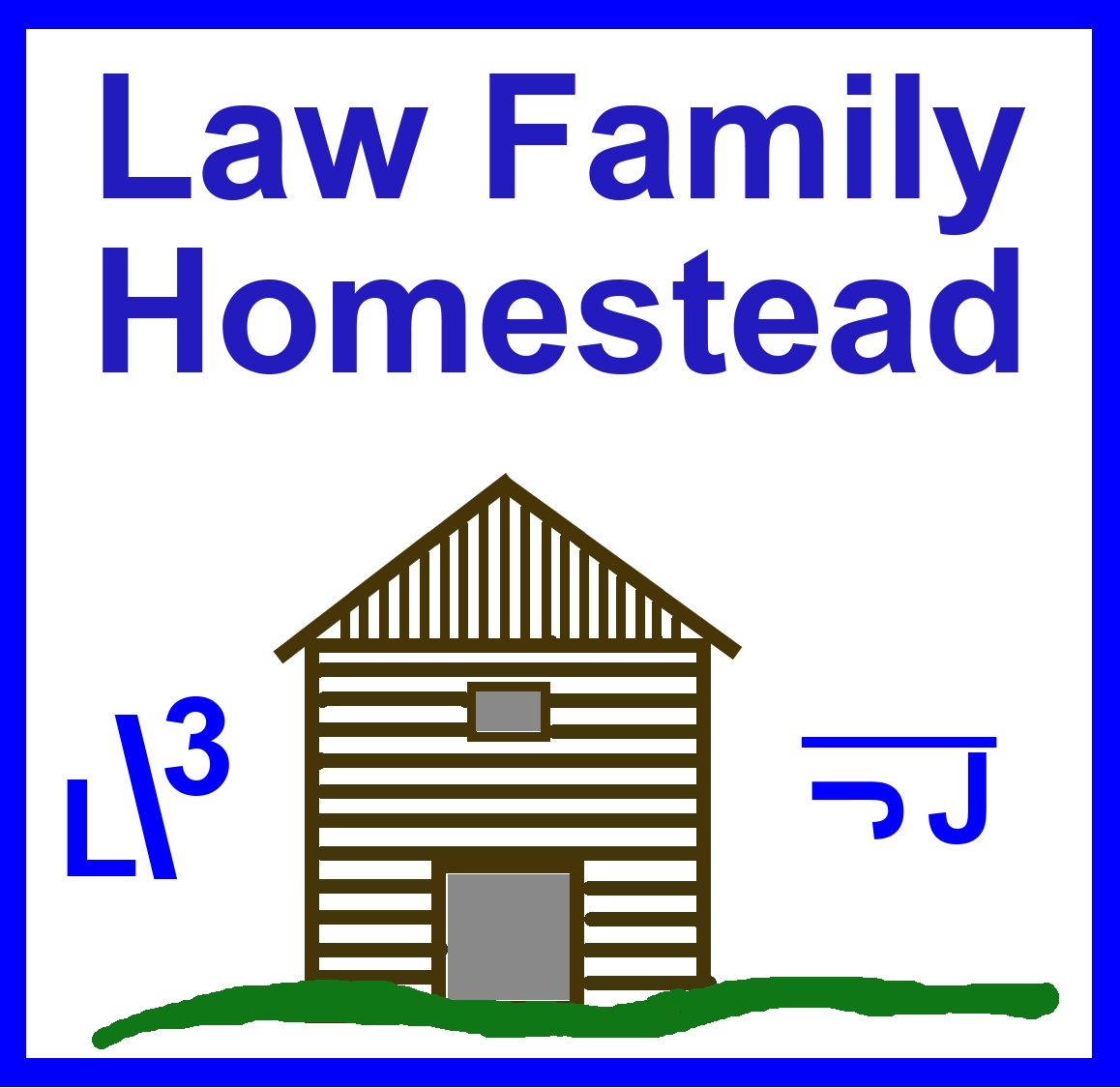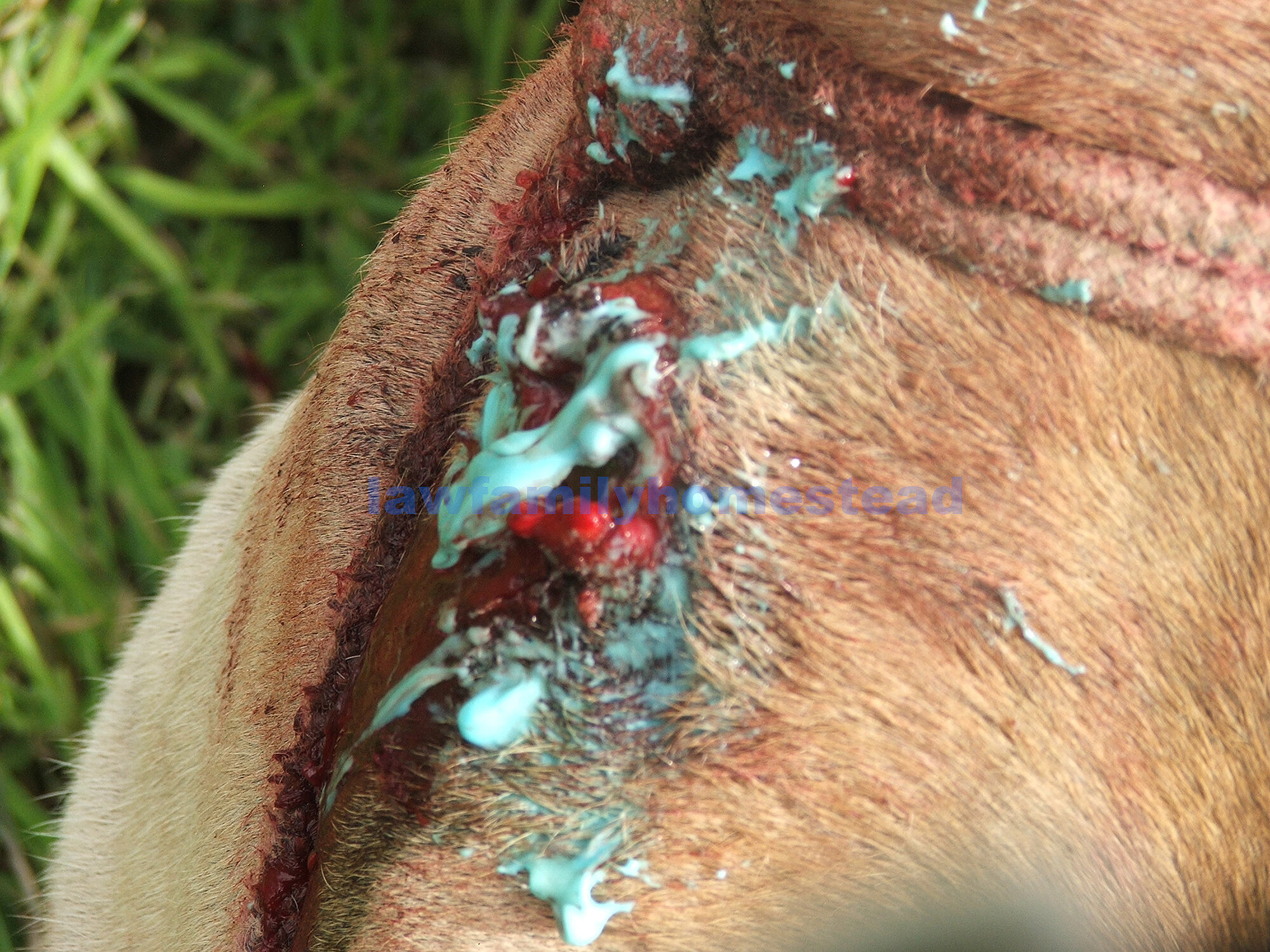When you live in the backwoods of Idaho, the availability of medical and veterinary services are few and far between. Over the years, while in Montana and now in Idaho, we've adapted to doing a lot of our own doctoring.
Last summer we found ourselves once again "practicing medicine". Walnut, a member of CW's oxen team developed a huge abscess on the side of his face.
I contacted the nearest vet about an hour away and verified what to do for treating it. As friendly and gentle as these oxen are, we have never had to doctor them until now. Walnut had no intention of us opening up the abscess, and in administering the first shot of penicillin he managed to bend my needle and break my syringe!
We decided to see if the abscess would come to a head on its own. It did! In a couple of days Walnut managed to break it open himself.
It blew a quarter size hole in the side of his face! Now we remembered a trick that an old timer in Montana told us about years ago. We couldn't quite remember it clearly but by comparing notes we pieced together the steps and gave it a shot.
It is called the "bull throw" or others call it "casting an animal". Now, we have hobbled, tied up legs, and thrown many colts and horses and a few cows over the years. A couple of good rope horses and fellows handy with a rope will do well too. But for just a couple people working on the ground the bull throw is quite efficient. Once applied, Walnut toppled over and laid on the grass in a state of paralysis while I cleaned out the abscess and gave him his penicillin shot. This time he never even flinched.
We then loosened the ropes so he could get up.
With a little encouragement he got right to his feet, showing no ill effects.
It was common practice, in the old days, to "throw, or caste" an ox to doctor or put shoes on. As far as we know, this practice was limited to bovines only.
Walnut lost no time getting up and leaving for parts unknown. CW brought him back around so we could then get some before pictures for a bit of a "how to".
We used a lariat rope we had on hand. A soft cotton rope would likely work as well and is what we use when we tie up a horse’s leg. etc.
We made a loop over his withers and around his belly, ran the rope back through the honda, and then placed the honda left of dead center on his withers. We then ran the rope down his spine and put a half hitch in front of the hip bones, under his flanks and pulled it snug. Next, we pulled it off the right side of his spine and made sure the knot was over the spine.
Kit then took a few steps back and leaned into the rope. It tightened around Walnut placing pressure on the spine, pinching the nerves, and after a half a minute or so, Walnut started to go down. Kit kept tension on the rope to keep him lying in a prone position.
After doing this twice, I am sold on doing the doctoring, and maybe even hoof trimming, this way. These boys are just getting bigger, they are already bigger than my milk cows by a bit. Our reference books say oxen will continue to grow until they are eight years old.
Good news - Walnut healed up with no scar at all!














